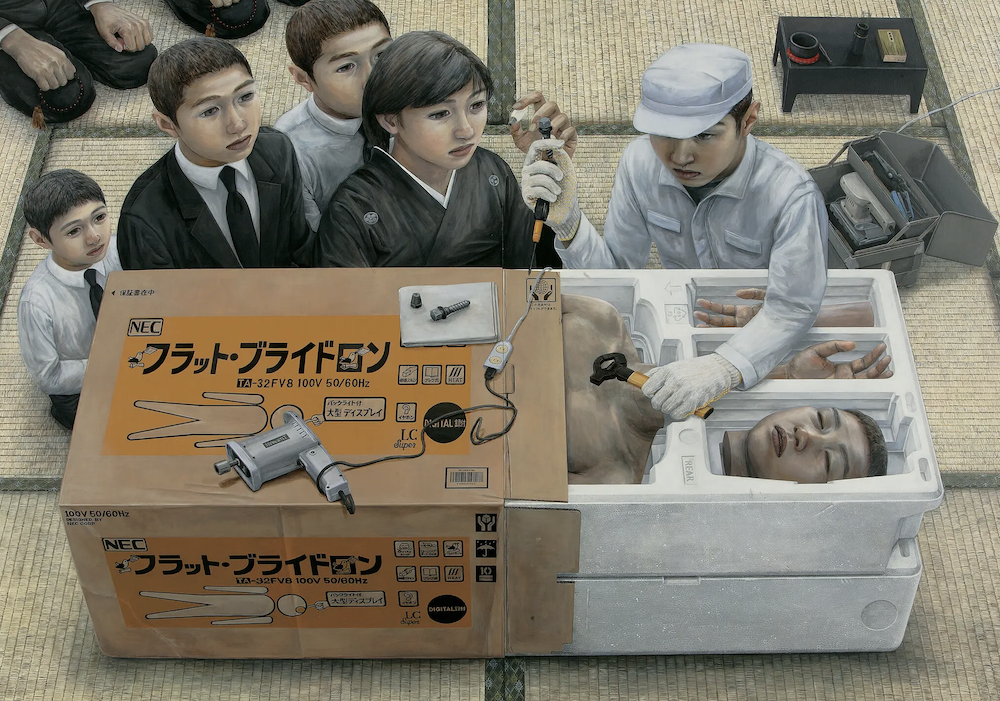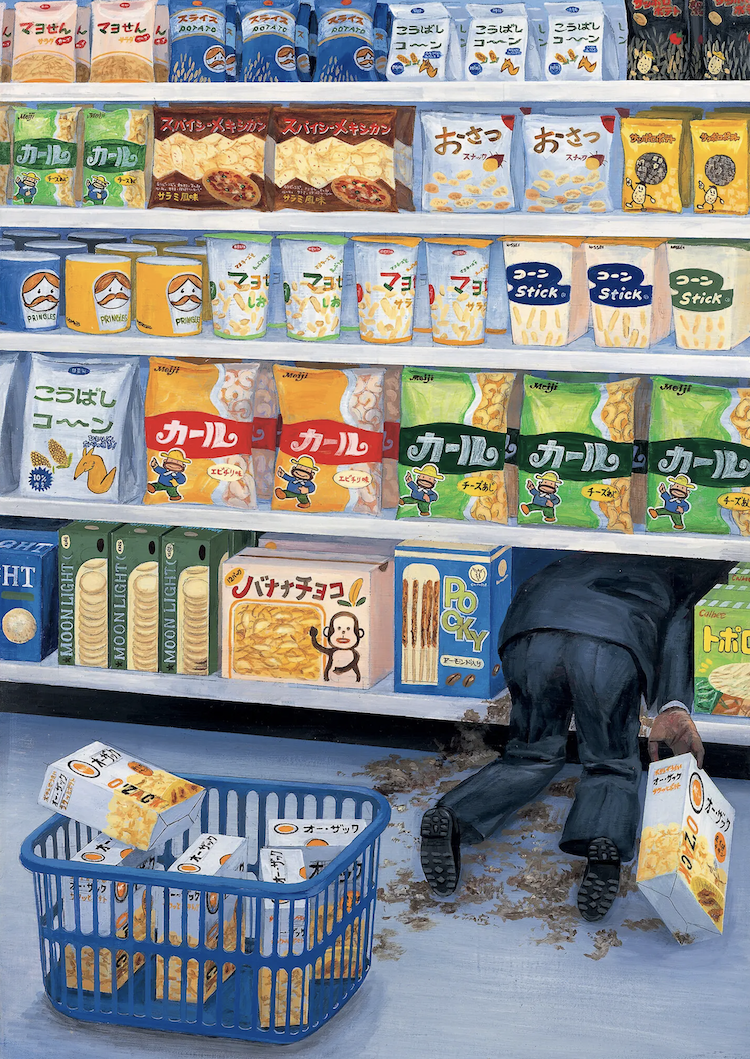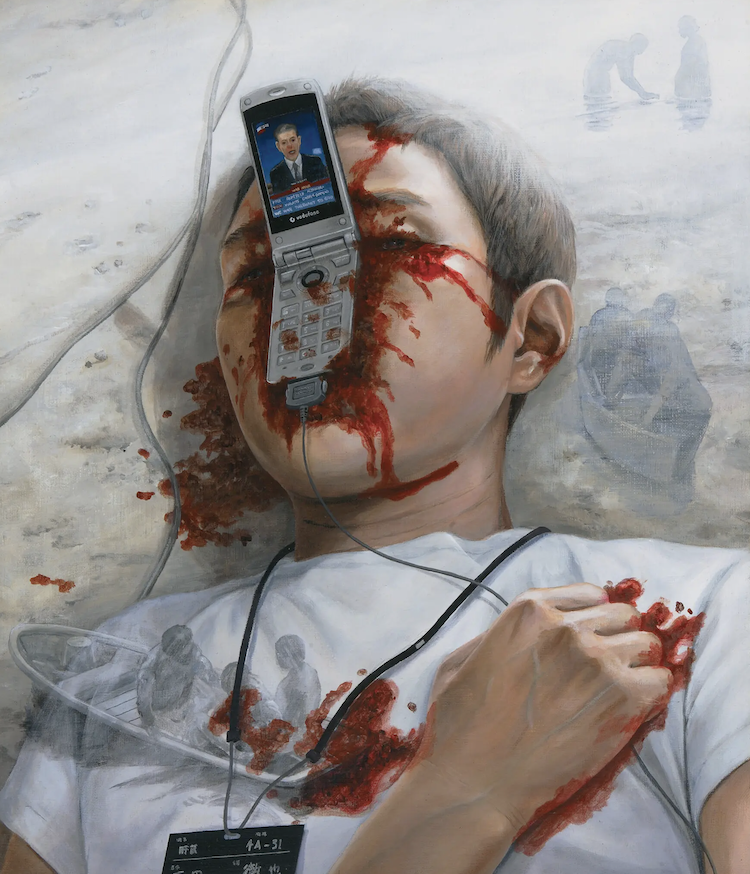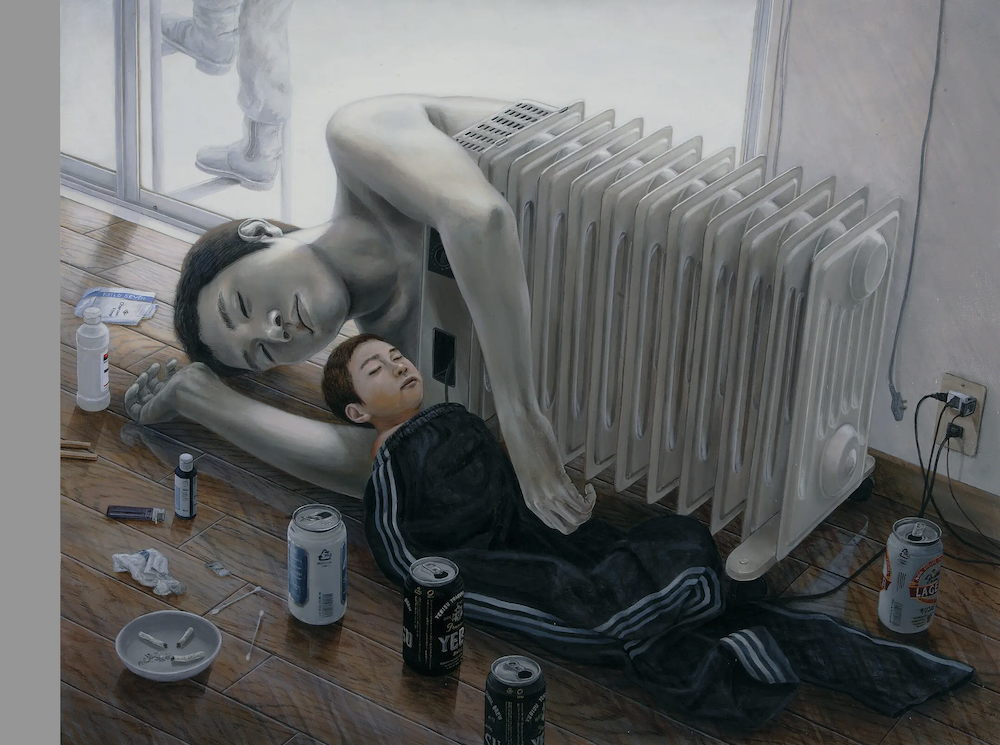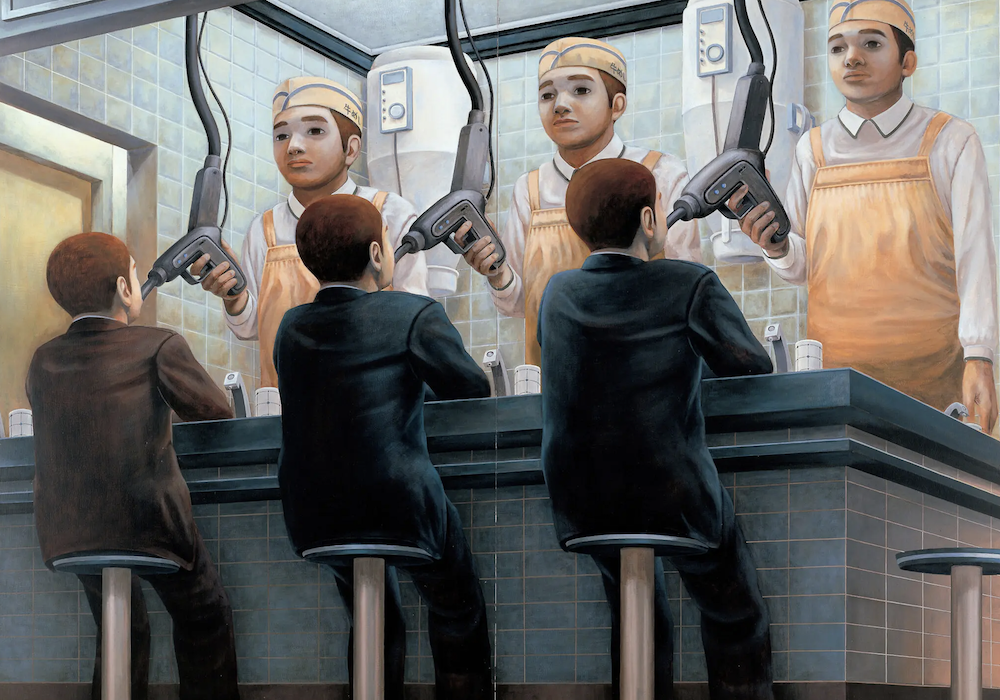The first time I saw the paintings of Tetsuya Ishida was the mid-1990s when I was a teenager growing up in Northern California. The works were obviously foreign to me, a sort of darkness that supermodernity can have over the individual, something that at the time I was beginning to recognize as a condition of the new century but also a particular topic that many seem to be challenging and examining in the 1990s. You could think of Radiohead's Ok Computer or David Fincher's take on the novel Fight Club, Naomi Klein wrote in No Logo, and you could look at the paintings of Ishida and could begin to see a certain fear of technology and its effects on labor and work and social life beginning to take form.
Gagosian in NYC has just opened the largest exhibition of works by Tetsuya Ishida that has been staged outside of Japan, curated by Cecilia Alemani. The showcase gives an insight into the "Lost Decade" of Japan and the tragic loss of Ishida of what perhaps was suicide after being hit by a train in Tokyo in 2005. My Anxious Self, the title of the show, comes from a quote from the artist himself, "At first, it was a self-portrait. I tried to make myself—my weak self, my pitiful self, my anxious self—into a joke or something funny that could be laughed at. It was sometimes seen as a parody or satire referring to contemporary people. As I continued to think about this, I expanded it to include consumers, city-dwellers, workers, and the Japanese people."
From the gallery, "Over the course of just ten years, Ishida produced a striking body of work centered on the theme of human alienation. He emerged as an artist during Japan’s “Lost Decade,” a recession that lasted through the 1990s, and his paintings capture the feelings of hopelessness, claustrophobia, and disconnection that characterized Japanese society during this time—even in the wake of its rapid technological advancement. Before his untimely death in 2005, Ishida conjured allegories of the challenges of contemporary life in paintings and works on paper charged with Kafkaesque absurdity."
It's almost painful to say the works contain a sense of humor in places, a sense of tragedy in others, a "disconnection" in so many places. But Ishida was ahead of his time in a global sense. What he saw in Japan was beginning to take shape around the world, a sort of alienation from feeling, from humanity, from each other. —Evan Pricco

